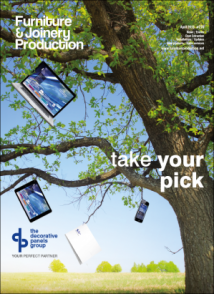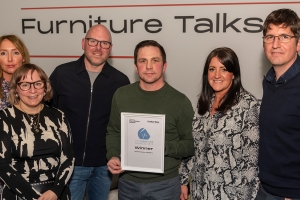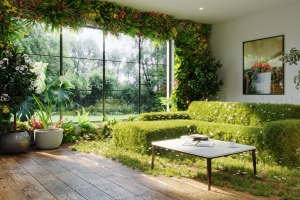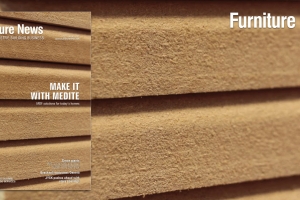It’s not easy being green – but it’s imperative that furniture businesses face up to the challenge. In the first of an exclusive series of articles exploring the whys and hows of becoming a more eco-conscious business, Hypnos Beds’ group sustainable development director, Richard Naylor, outlines what sustainability means – and why it’s important …
Can you explain sustainability to our readers? This is the question Furniture News’ Paul Farley posed to me a few weeks back, which, as a nerd on this subject, I was delighted to do. Sustainability is a serious topic, which as an industry and as individuals we need to embrace to help reverse climate change and transform the world we live in. Hopefully, I can help demystify ‘sustainable development’ and share some of the learnings from my MSc course in sustainability and my journey to becoming a chartered environmentalist.
As a father, citizen of planet earth and a person in business (please don’t yawn), I am particularly interested in creating long-term value enhancement, which means I want to see sustainable development. But what is sustainable development?
Let’s take a look at the origins of a term we use so commonly today. Sustainable development (SD) can trace its origins all the way back to the 1972 (yes, 50+ years ago – what have we been doing?) UN Stockholm Conference on Human Environment, when SD thinking was introduced as a concept.
Momentum for the term ‘sustainable development’ increased dramatically when it was defined in the 1987 World Commission on Environment and Development report, ‘Our Common Future’, which was formulated by the General Assembly of the UN (also widely known as the Brundtland report after commission chair Gro Harlem Brundtland who also happened to be the first female prime minister of Norway – a remarkable woman!).
The report defined sustainable development as “development that meets the needs of the present without compromising the ability of future generations to meet their own needs”.
In 1992, five years after the publication of the Brundtland report, the UN held the first Conference on Environment and Development, which in turn was named the Earth Summit.
The main outcomes of this summit were: The Rio Declaration, which recognised the right of states to economic and social development and contained 27 principles of sustainable development, including the well-known precautionary and polluter pays principles; endorsement of the Forest Principles, which recognised the importance of forests for economic and social development, indigenous communities, biodiversity and maintaining ecological processes; the signing of the Convention on Biological Diversity and the Framework Convention on Climate Change; and Agenda 21, which was a voluntary SD plan of action, for implementation by national, regional and local governments.
There have been several other UN sustainable development milestone summits since the Rio Earth Summit, but perhaps the most significant was RIO+20, which was held in 2012, 20 years after the original Earth Summit.
The outcome of RIO+20 was a document entitled The Future We Want, which not only reaffirmed all other previous SD agreements, plans and targets, but also committed to the development of a suite of Sustainable Development Goals (SDGs).
Accordingly, in 2015, at the UN Sustainable Development Summit held in New York, 193 member states adopted a new transformational agenda, Transforming Our World: The 2030 Agenda for Sustainable Development, which included a new suite of 17 SDGs which cover five pillars of sustainability – people, planet, prosperity, peace and partnership. The goals were designed to be a “blueprint to achieve a better and more sustainable future for all”.
The SDGs blueprint format helps individuals, nations and business to develop strategies that help create change – change that should deliver a world of peace and properity, eradicating major issues such as poverty and hunger, all while protecting the planet.
So, we now know the origins and the modern definitions of sustainable development in the form of the UN SDGs – but how should we use them? The answer to this question is different for every business. We should question our activities through the 17 different lenses of the UN SDGs, and ask what could we do better. What are our areas/gaps? How can I transform my business model to meet the 17 goals, whilst remaining commercial? 2030 is the deadline for the implementation of the UN SDGs, which is why this timeline has been nicknamed ‘the decade of action’.
The bad news is that human activity (or the Anthropocene as natural history boffins like to call it) has routinely taken more resources from the planet than it can sustain or regenerate. Our atmosphere, our natural capital, our oceans and all living creatures have been systematically raided and not nurtured, and the news consistently reports loss of life, species extinction and extreme weather events.
But all is not lost. We are a creative species – we have the ability to change and transition to a better way of doing things, and this starts with a design, a ‘blueprint’ to do things differently.
We live in a world where political rhetoric and spin has left politics in an utter mess. Policy over the next 5-15 years will change depending on which party is holding the reins. What I do know is that our furniture businesses are consistent – we are here for the long term, and we hold the power to make positive change, to be beacons to other industries. The UN SDGs are a simple toolkit that helps us all evaluate our activities and to make considered choices for our business strategies and for future generations of customers that we hope to retain. In the midst of a global climate and biodiversity crisis, sustainable development has never been more important.
This is the first in a series of articles on the topic of sustainability from Richard – see next month's Furniture News for more.








